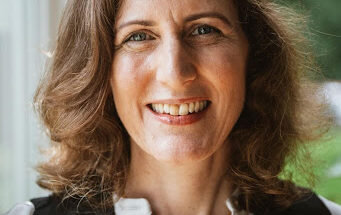Multilingual students take courses in native tongue
BY BASMA HUMADI, STAFF WRITER
Being a first generation immigrant is hard. On one hand, it involves balancing the cultures and traditions of your family’s native country, and on the other hand, it involves the struggle of just being a kid trying to fit in with the culture you’re living in.
For this reason, many first-generation immigrants struggle with knowing their native language fluently: they speak with noticeable American accents and understand the language more than they can read or write it. So what’s the solution?
Taking courses at Mason as a way to visit the gaps in their language and paying to learn their own language. It’s an outlet for students to rediscover the gray areas in their language.
Many first-generation immigrants grow up knowing how to speak their original language, but usually, once they start attending school regularly, the prevalence of English replaces the native language. Mohamad Sahyouni, a junior at Mason and a Syrian-Turkish American, currently takes ARAB 110 (Elementary Arabic) at Mason and knows this problem well.
“Basically until about first grade, I was able to speak and understand Arabic fluently,” Sahyouni said. “But once I was into the American environment and [learned] English, my language sensor changed to English being my first language instead of Arabic. So I forgot Arabic because I wasn’t using it as much because I was using English more often.”
Ellen Serafini, a Mason professor teaching Spanish for Heritage Students at Mason (SPAN 315) recognizes this issue and actively works to figure out ways to teach Spanish to her students. The course, which was created by Mason professor Jennifer Leeman in 2007, intends to address and meet “the unique socioaffective, cultural and linguistic needs of our Spanish heritage speaker students,” Serafini said. The course not only provides students the ability to learn and improve their language ability, but also provides meaningful content for them to understand how language operates.
“In this class, we teach learners fundamental sociolinguistic concepts, such as the natural ways that languages vary and change over time and according to different geographical, social and contextual factors,” Serafini said.
Spanish is a unique case as the second most-used language in the U.S. It has deep historical roots because it was spoken in North America before English. Thus, certain factors like continuous immigration patterns and a higher level of—though this varies greatly by region—tend to favor maintenance of Spanish.
“However, we have a long history of linguistic discrimination in this country, and the constantly shifting (and often contradictory) ideologies circulating through society about bilingualism in general, and immigrant bilingualism in particular, negatively impact maintenance,” Serafini said.
“If you are an immigrant, particularly language minority children, [bilingualism] is seen as a ‘problem’ to be solved or an ‘obstacle’ to be overcome. These shifting ideologies reflect underlying beliefs or orientations to viewing language as a problem, right or resource.”
Fostering children to practice both languages can be difficult, and each first-generation immigrant’s experience in how their parents enforced language varies. Some parents take their children to their native country during school breaks so they’ll familiarize themselves with their language and culture. Ahmed Mohammed, an Egyptian-American also taking ARAB 110, was raised by a mother who made her children reply to her in their native language.
“If my mom spoke to me in English, I responded in English,” Mohammed said. “If she spoke to me in Arabic, I responded in Arabic. Sometimes she would tell us she didn’t speak English just so we would respond to her in Arabic.”
In many cases, parents speak to their children in their native language and the child responds back in English.
Another factor to take into account when knowing a native language fluently is dialect. First-generation immigrants may be able to speak to their parents, but much of what they know about their language is rooted in dialect, and so it can be difficult to understand other versions of the same language. In SPAN 315, students actively work to dissect the concept of dialect.
“Exposing the ideologies that delegitimize their particular dialect of Spanish is a primary goal, and one way we do this is through a simple Google search activity,” Serafini said. “Students work in groups to search for phrases such as ‘Where is the best Spanish spoken?’ They collate and analyze the results yielded by their search, then visually organize and share their findings through creating a word cloud via free programs like Wordle (www.wordle.com). Afterward, we discuss and critique the ideologies underlying their results as a class.”
In the case of learning Arabic, dialect heavily differs from country to country. Moroccan dialect, for example, is known to be completely different from other Arabic dialects because it has French and Spanish influences in its words. Egyptian dialect has its own dynamics that are different from other types of Arabic.
“I know how to speak with Egyptian dialect, but I wanted to know the proper way so I could be able to understand everything,” Mohammed said.
First-generation American immigrants live in one of the most powerful and richest places in the world, yet they can’t keep up with their own language. A feeling of shame may come with not knowing your native language, and it has come to be a symbol for losing your roots—manifesting itself as a sore spot for a person’s identity.
“Oftentimes, our heritage students arrive to the classroom with the internalized perception that they speak ‘bad’ Spanish, based on what they have been told by family members, friends, former teachers, etc,” Serafini said. “They often express feeling like they don’t measure up to formally educated native speakers of Spanish and this belief tends to manifest itself in anxiety and linguistic insecurity when writing and/or speaking. Thus some, but not all, heritage speakers perceive their own identity in contrast to monolingual native speakers.”
SPAN 315 tries to be sensitive to this issue and tries to foster an environment where students have positive motivation to sustain their heritage language. After attending her class, heritage students have now begun to express pride in fostering a new kind of relationship with their native language.
“On the other hand, heritage speakers also express great pride in speaking a bilingual variety of Spanish, or one that shows evidence of contact with English,” Serafini said. “It serves as a resource for constructing their identities in interaction with other bilinguals and distinguishes them from (monolingual) Spanish-speaking groups.”
Most first-generation immigrants are just a product of the environment they live in. Since English is everywhere, their native language takes a backseat and eventually disappears.
“They do not [think I’m Americanized], they just think that’s just how it is in society,” Sahyouni said. “Language is like a muscle, if you don’t use it you’re going to lose it. So, since I didn’t use [Arabic], I lost it.”
For some, language turns itself into a responsibility that first-generation immigrants feel to uphold their family’s language and pass it on when they have kids. There’s no saying how second-generation immigrants will grow up with their native language.
“A lot of research has been done on intergenerational language shift within immigrant families, with most studies showing that by the third generation, speakers’ dominant language generally shifts to English, and their ability to fluently produce the home language decreases dramatically, though receptive skills often remain intact,” Serafini said.
Graphic by Billy Ferguson




